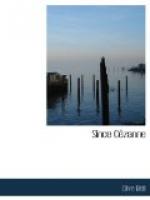Every now and then we hear eloquent appeals to the appropriate authorities, praying them to add to their school of journalism a department of art criticism. I hope and believe the appropriate authorities will do no such thing. Should, however, their sense of economy be insufficient to restrain them from paying this last insult to art, they will still find me waiting for them with a practical suggestion. Any student proposing to educate himself as a critic should be compelled to devote the first years of his course to the criticism of non-representative art. Set down to criticize buildings, furniture, textiles, and ceramics, he will find himself obliged to explore the depths of his own aesthetic experience. To explain honestly and precisely why he prefers this chair to that requires, he will find, a far more intense effort of the intellect and imagination than any amount of fine writing about portraits and landscape. It will force him to take account of his purely aesthetic emotions and to discover what exactly provokes them. He will be driven into that world of minute differences and subtle reactions which is the world of art. And until he knows his way about that world he would do well to express no opinion on the merits of pictures and statues.
BONNARD [M]
[Footnote M: Bonnard. Par Leon Werth. Paris: Cres. 40 fr.]
In France, where even amateurs of painting enjoy a bit of rhetoric, for two or three days after the death of Renoir one could not be long in any of their haunts without being told either that “Renoir est mort et Matisse est le plus grand peintre de France” or that “Renoir est mort et Derain,” etc. Also, so cosmopolitan is Paris, there were those who would put in the query: “Et Picasso?” but, as no Frenchman much cares to be reminded that the man who, since Cezanne, has had the greatest effect on painting is a Spaniard, this interjection was generally ill-received. On the other hand, those who queried: “Et Bonnard?” got a sympathetic hearing always.




